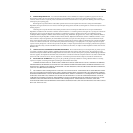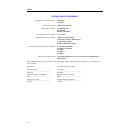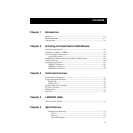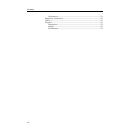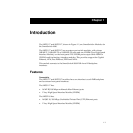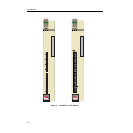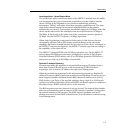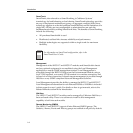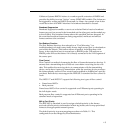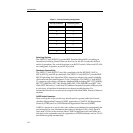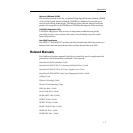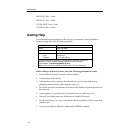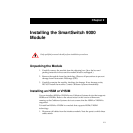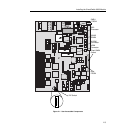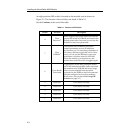
1-5
Introduction
Cabletron Systems RMON Actions is a vendor-specific extension of RMON and
provides the ability to set an “Action” on any SNMP MIB variable. The Action can
be triggered by setting an RMON Event and/or Alarm. An example of an Action
would be to turn off a MIB-2 interface if a broadcast threshold is crossed.
Broadcast Suppression
Broadcast Suppression enables a user to set a desired limit of receive broadcast
frames per port/per second to be forwarded out the other ports on the module up
to the set limit. Any broadcast frames above this specified limit are dropped. In
the event that broadcast frames are being suppressed, multicast and unicast
frames continue to be switched.
Port Redirect Function
The Port Redirect function, also referred to as “Port Mirroring,” is a
troubleshooting tool used to map traffic from a single source port to a destination
port within the chassis. This feature allows all packets, including those with
errors, to be copied and sent to an analyzer or RMON probe. The analyzer or
RMON probe will see the data as if it is directly connected to the LAN segment of
the source port.
Flow Control
Flow Control is a method of managing the flow of frames between two devices. It
ensures that a transmitting device does not overwhelm a receiving device with
data. This enables the receiving device to communicate with the transmitting
device, and to have it pause its transmission while the receiving device processes
the frames already received. Flow control can be enabled or disabled on a port-by-
port basis. Both devices must support the IEEE 802.3x standard for flow control to
work.
The 9H531-17 and 9H532-17 support the following two types of flow control:
• Frame based 802.3x
• Back pressure
Frame based 802.3x flow control is supported on all Ethernet ports operating in
the full duplex mode.
Back pressure flow control is supported on all Ethernet ports operating in the
standard mode of operation.
802.1p Port Priority
The IEEE 802.1p standard is used to assign a default priority to the frames
received without priority information in their tag header, and to map prioritized
frames to the appropriate transmit queues.
The default priority-to-queue mappings are shown in Table 1-1. This
configuration can be changed by the administrator.



